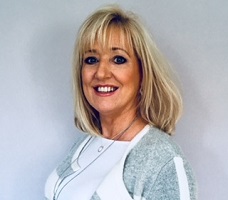Nurses administer most cervical cancer screening in England

WHO
“The screening programme is set up to be delivered by primary care in England, and although general practitioners can conduct cervical screening and do so on occasions, this is not the best use of a doctor’s time. There are not enough general practitioner doctors to conduct all the cervical screening tests and this would not be an efficient way to work,” said Ms Ruth Stubbs, Cervical Screening Programme Manager for Public Health England.
Before being allowed to administer the screening tests, nurses are required to take an initial theoretical training course and participate in a supervised clinical practice training. They must pass a clinical assessment before they are finally signed off as competent.
“Nurses are more than capable of administering the cervical screen, and the nurses have the appointment time and consultation and clinical skills required for the role,” added Ms Stubbs.
Quality assurance and quality control are paramount in the English screening programme. Only nurses who have completed the appropriate training can take cervical screening samples. Nurses are required to use a personal identification number when they submit samples, which allows the laboratory to monitor the quality of the samples and provide feedback. Nurses are also required to attend a cervical screening update training every 3 years.
Ms Stubbs began her career as a general practice nurse, but always had a strong interest in women’s health. She later taught other nurses how to conduct cervical screening tests and now manages the national programme.
“I think the experience that a nursing training gives you never really leaves you. My experience has been extensive, I’ve gone from nursing women in their homes who were dying of cervical cancer to actually screening to prevent cervical cancer in primary care, to setting the guidance and standards as the national programme manager,” she said. “Understanding the needs of women is central to our work.”
There are 28 000 deaths from cervical cancer each year in the WHO European Region. Countries should prioritize cervical cancer screening as it is the most cost-effective and feasible cancer screening programme according to WHO.
“This has the potential to save many lives. WHO has launched an initiative to eliminate cervical cancer as a public health problem, and this includes human papillomavirus (HPV) vaccination, screening and treatment,” said Dr Marilys Corbex, Senior Technical Officer for Cancer Control in the WHO European Region.
WHO aims to improve screening in the European Region. As part of this, it is holding the European Conference on Screening on 11–12 February 2020 in Copenhagen, Denmark. The Conference will bring together policy-makers and other experts from over 40 countries to discuss ways to increase effectiveness, maximize benefits and minimize harm from screening.
Cervical screening programme developed
When cervical screening first started in England, there was no structured programme. This eventually led to a real concern that women at greatest risk were not being screened or correctly followed up. In 1988, a national programme was finally established and a computerized call and recall system was introduced to invite all women from 20 to 64 for screening.
In 2003, the age of women who are recommended to take the test was raised to 25. It was accepted that normal changes in the cervix before the age of 25 could lead to unnecessary treatment with potentially negative consequences for childbearing. Screening at 25 is early enough to detect and treat abnormal changes.
The recommended cervical screening intervals also changed to every 3 years for women up to the age of 49, and every 5 years for those between the ages of 50 and 64.
School-based vaccination programme
A further major development to prevent cervical cancer was the introduction in 2008 of the school-based HPV vaccination programme. In England, HPV vaccination is offered routinely to all girls between the ages of 12 and 13, before they become sexually active and the risk of HPV infection increases.
An HPV vaccination catch-up campaign was launched in 2008 for girls up to 18 years of age who would otherwise have missed out. In 2015, the girls who took up the offer of the vaccination in the catch-up campaign started to enter the screening programme. The first school-based cohort will enter the cervical screening programme in 2020.
WHO aims to raise awareness that timely vaccination against HPV in combination with regular screening for cervical cancer is the best way to protect girls’ futures from this tragic disease.



